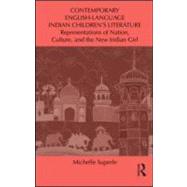- ISBN: 9780415886345 | 0415886341
- Cover: Hardcover
- Copyright: 4/6/2011
Concurrent with increasing scholarly attention toward national children's literatures, this book explores an emerging body of literature that has thus far garnered little serious critical attention: contemporary, English-language Indian children's novels. The work critically examines the ways Indian children's writers have represented childhood in relation to the Indian nation, Indian cultural identity, and Indian girlhood. From a framework of postcolonial and feminist theories, children's novels published between 1988 and 2008 in India are compared with those from the United Kingdom and North America from the same period, considering the differing ideologies and the current textual constructions of childhood at play in each.Superle demonstrates that an aspirational view of childhood is predominant in this literature'a view that positions children as powerful participants in the project of enabling positive social transformation. The 101 novels examined comprise an idealistic corpus with a strong ideological agenda informed by liberalism: they imagine apparently empowered child characters that perform in diverse ways in the process of successfully creating and shaping the ideal Indian nation, their own well-adjusted bicultural identities in the diaspora, and/or their own empowered girlhoods. The idealised portrayals in the novels can be seen as hopeful and inspirational, especially in their capacity to offer the possibility of improvements upon current reality. Yet at times their optimistic outlook can also be regarded as problematic, in that they remain overly reliant on western liberal feminism, rest on an unproblematised hegemonic sociopolitical hierarchy, and perpetuate essentialised versions of Indianness.







